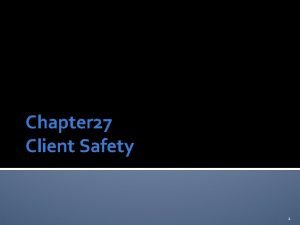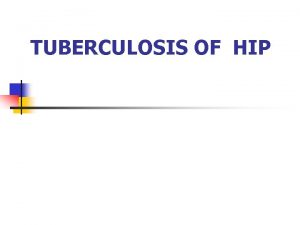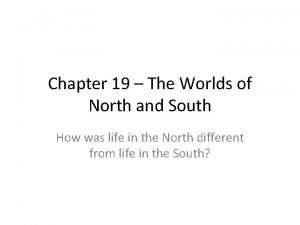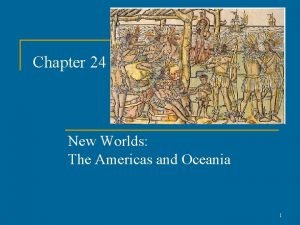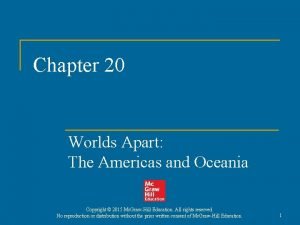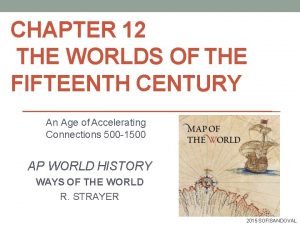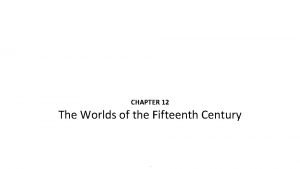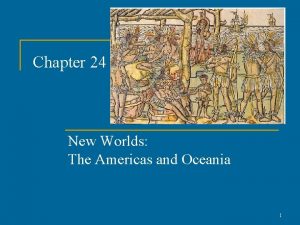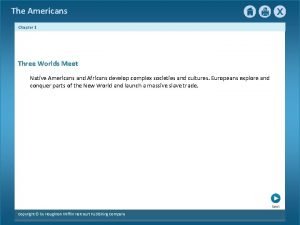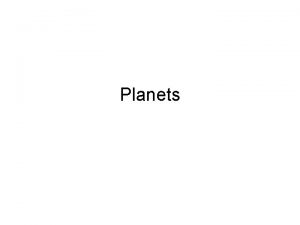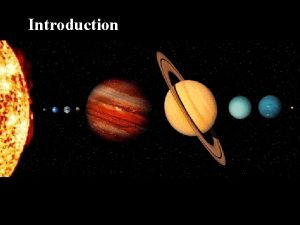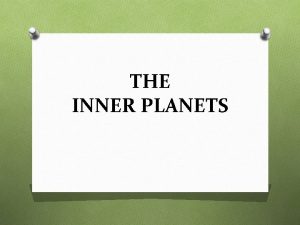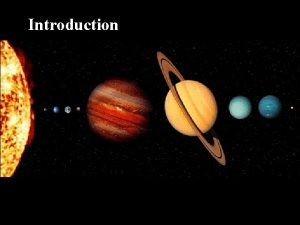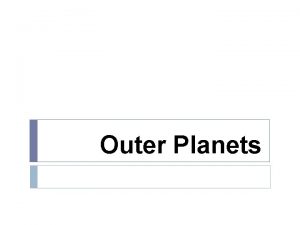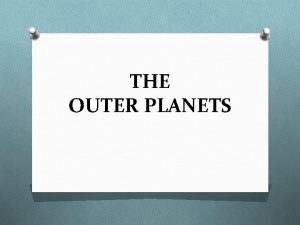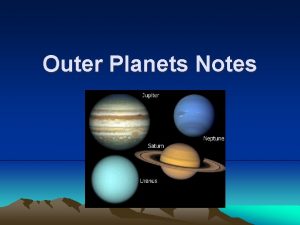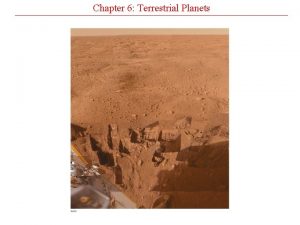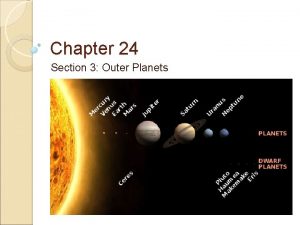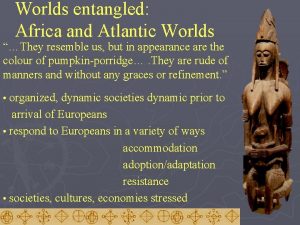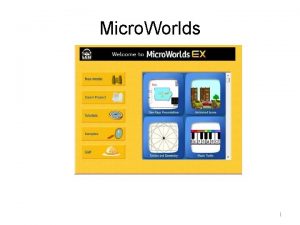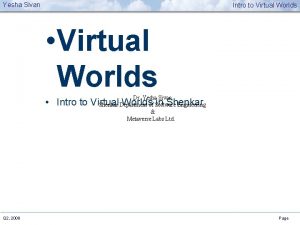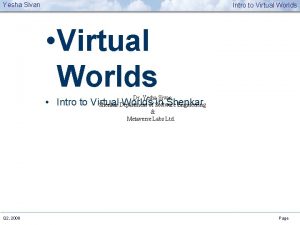Planets Wandering Worlds Chapter 4 Planets The planets







































- Slides: 39

Planets: Wandering Worlds Chapter 4

Planets • The planets are called wondering worlds… • This is because they are in motion.

Planets • Planets cannot be mapped like stars can, because the planets are always moving. • Planets do not give off their own light…We see them at night only because they are reflecting the light from the sun!

Planets • The four planets nearest the sun are: Mercury, Venus, Earth, and Mars • These are the “inner planets”

Planets • The four planets farthest from the sun are: Jupiter, Saturn, Uranus, and Neptune. • These are the “outer planets”

Mercury: The Moonlike Planet • Mercury is the smallest planet. • It is barren, rocky, and full of craters. • It travels at 30 miles per second and is thus called the “speediest planet”

Mercury • It orbits the sun in only 88 earth days. • Mercury rotates very slow…one “day” is 2/3 of the planets short year. • Daylight lasts 176 earth days and so does darkness.

Mercury: The Moonlike Planet • Mercury ranges from 29 million miles to 43 million miles from the sun. • Parts of the planet get as hot as 797° F.

Venus: Earth’s Nearest Neighbor • Venus is the “first star” you see in the evening. • It is bright due to the cloud coverage that it has.

Venus • It orbits the sun every 225 Earth days. • It rotates every 243 Earth days. • It is thus, the only planet with a day longer than its year!!!!

Venus • Venus is about the same size as Earth and so is called our “twin. ”

Venus • Venus has no water. • It has an atmosphere made of 95% carbon dioxide! • Its pressure is 90 times greater than the Earth. • Due to the atmosphere of CO 2, it is the hottest planet in the solar system!

Mars: The Red Planet • Mars glows red in our sky and so is called the Red Planet. • It has three moons: – Phobos – Deimos – Gaspra

Mars • Mars is barren. • It is rocky with windswept deserts of reddish sand. • Mars has violent dust and storms.

Mars • Mars has polar ice caps that appear white on the surface.

Mars • The atmosphere is 95% carbon dioxide. • Its temperature is relatively stable (-190 F to 70 F).

Mars • The planet has deep canyons and towering volcanoes! • The Tharsis Bulge is the location of the most gigantic mountains and valleys in the solar system!

Mars • There are four extinct volcanoes on the bulge: • The largest is Olympus Mons – it is 3 X larger than Mt Everest!

Olympus Mons

Mars • Because water does not exist on the surface of Mars…the many Martian canyons are a mystery to scientists. • They may have formed from storms or “marsquakes”.

Jupiter • Jupiter is the largest planet in our solar system! • It is bigger than all other planets put together! • It has the fastest rotation – 9 hrs 50 min!

Jupiter • It is a gas giant composed of hydrogen and helium. • Jupiter has storms all across its great surface! • The Giant Red Spot is a cyclone 3 x bigger than the earth!

Jupiter • Jupiter has 16 moons! • The largest is Ganymede which is bigger than mercury! • Europa is icy white. • Calisto is also icy and covered in craters. • Io has active volcanoes!

Saturn • Saturn is best known for its rings. • It is also a gas giant. • Saturn has multiple moons.

Saturn • Two of its moons, Iapetus and Phoebe travel several million miles from Saturn. • Titan, the largest, is icy nitrogen. • Titan is larger than Mercury.

Uranus • Uranus is the third largest planet in the solar system. • Uranus has atmosphere of hydrogen, helium, and methane gas. • Uranus may have a core the size of earth!

Uranus • Uranus has 21 moons. • One moon, Miranda, has a giant cliff that is twice the size of Mt. Everest! Photo taken by Voyager 2

Uranus • Uranus also has 10 dark rings around it.

Uranus • The unusual thing about Uranus is that Uranus is set on its edge in relation to the rest of the solar system. • The rings and planet are perpendicular to the rest of the planets.

Neptune • Neptune takes 165 earth years to orbit the sun one time! • Neptune’s day are short – only 16 hours.

Neptune • Neptune is believed to have vast oceans of water. • Its atmosphere, however, consists also of methane (giving it the blue color) • It has stronger winds than anywhere else in the solar system!

Neptune • Neptune has rings! • The rings are very small and are made of dust particles!

Neptune • Neptune has 11 moons. • The largest is Triton! • Triton has its own atmosphere! • Geyers on Triton spout liquid nitrogen 5 miles into the atmosphere! • Triton orbits Neptune clockwise – the only large moon to do so in the solar system! Photo taken by Voyager 2

Pluto: Dwarf Planet #1 • Pluto closer to the size of an asteroid than a planet. • Pluto has a “moon” named Charon that is actually about the same size as the planet itself.

Pluto: Dwarf Planet #1 • Pluto’s orbit sometimes takes it across the path of Neptune.

Eris: Dwarf Planet #2 • Eris is larger than Pluto. • Eris is 10 Billion Miles from the sun!!!! • It is farther out than some Kuiper Belt objects.

All Five Currently Named Dwarf Planets • UB 313 (also known as a plutoid, informally known as Xena, and now formally known as Eris) • Pluto (also known as a plutoid) • Ceres (remains in the category of dwarf planet) • Make (also known as a plutoid, new official name for Dwarf Planet 136472 2005 FY 9) • Haumea (also known as a plutoid, new official name for Dwarf Planet 136108 2003 EL 61, originally called "Santa. ".

JPL Site for Looking at the Planets and Dwarf Planets • http: //sse. jpl. nasa. gov/planets/index. cfm

The End!!!!
 Slides
Slides A deadly wandering chapter 1 summary
A deadly wandering chapter 1 summary Which four planets are outer planets?
Which four planets are outer planets? What separates the inner planets and outer planets
What separates the inner planets and outer planets What is each planet made of
What is each planet made of Inner terrestrial planets
Inner terrestrial planets How are terrestrial planets different from jovian planets?
How are terrestrial planets different from jovian planets? Wandering atrial pacemaker rhythm
Wandering atrial pacemaker rhythm Wandering pacemaker
Wandering pacemaker Wandering pacemaker
Wandering pacemaker A nurse floats to a busy surgical unit
A nurse floats to a busy surgical unit A wondering mind is an unhappy mind
A wondering mind is an unhappy mind Nomads are wandering people
Nomads are wandering people Wandering baseline fhr
Wandering baseline fhr Dewing wandering risk assessment tool
Dewing wandering risk assessment tool Ovary ka chitra
Ovary ka chitra Wandering acetabulum
Wandering acetabulum Wandering acetabulum
Wandering acetabulum Chapter 19 the worlds of north and south answer key
Chapter 19 the worlds of north and south answer key New worlds the americas and oceania
New worlds the americas and oceania Chapter 24 the americas and oceania
Chapter 24 the americas and oceania Chapter 20 worlds apart the americas and oceania
Chapter 20 worlds apart the americas and oceania The worlds of the fifteenth century
The worlds of the fifteenth century The worlds of the fifteenth century
The worlds of the fifteenth century Chapter 10 the worlds of christendom notes
Chapter 10 the worlds of christendom notes Chapter 10 ap world history
Chapter 10 ap world history Chapter 24 new worlds the americas and oceania
Chapter 24 new worlds the americas and oceania Chapter 10 the worlds of christendom notes
Chapter 10 the worlds of christendom notes Transcontinent
Transcontinent Hát kết hợp bộ gõ cơ thể
Hát kết hợp bộ gõ cơ thể Bổ thể
Bổ thể Tỉ lệ cơ thể trẻ em
Tỉ lệ cơ thể trẻ em Gấu đi như thế nào
Gấu đi như thế nào Tư thế worm breton là gì
Tư thế worm breton là gì Hát lên người ơi
Hát lên người ơi Các môn thể thao bắt đầu bằng tiếng chạy
Các môn thể thao bắt đầu bằng tiếng chạy Thế nào là hệ số cao nhất
Thế nào là hệ số cao nhất Các châu lục và đại dương trên thế giới
Các châu lục và đại dương trên thế giới Công thức tính thế năng
Công thức tính thế năng










